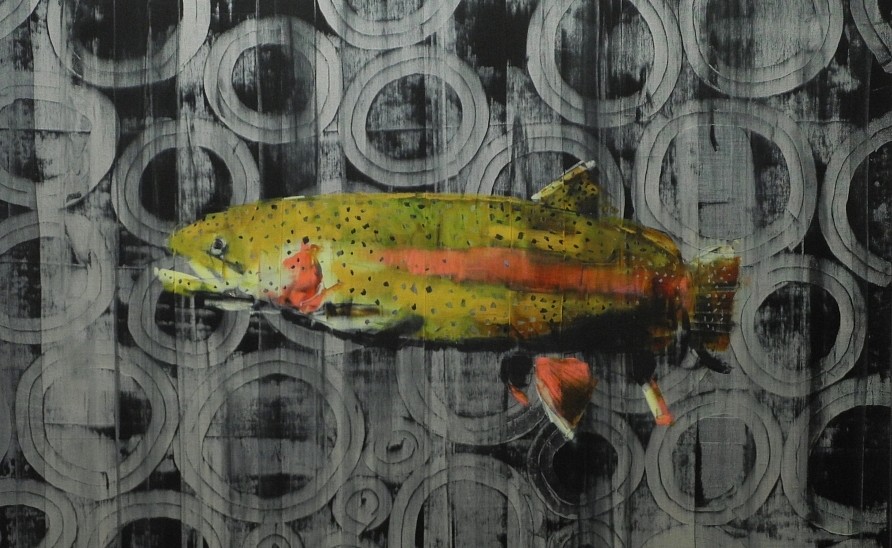PRESS RELEASE

LES THOMAS: Trout
Sep 11 – Oct 31, 2020
Diehl Gallery
presents
LES THOMAS: Trout
09.11.20 - 10.31.20
In light of Covid-19 and in an effort to keep our artists, staff, and collectors safe, we will not host an opening reception.
We are currently only open by appointment. Please call us to schedule a visit.
We require masks for entry into the gallery.
Masks will be available for those guests who don’t have their own.
Trout-
We catch and release thoughts and memories as well as trout; we grasp meanings one moment only to lose them the next, like strikes that prove to be no more than snags, or big ones that jump the hook just as you think you’ve won. Sometimes the harder you struggle, the more likely you are to lose. I suppose that’s the one and only sense in which fishing is like life at large. And all it really means is that fishing is worth thinking about because of the thinking that fishing allows.
Mark Kingwell
Catch and Release
Trout Fishing and the Meaning of Life.
Although the earliest form of aquaculture is believed to have originated in Europe around 4000 BC, the emergence of trout farms, as we know them today, started up in France during the 1850’s. These early piscifactories propagated trout for the purposes of producing eggs, and shipping those eggs to destinations as far away as Australia. Such precious cargo was transported in wooden crates, embedded in layers of moss, and kept chilled by frequent applications of ice chips.
I find it interesting that these early trout farms emerged at roughly the same time as mass imagery. Photography had been around since 1839, but the process of printing photos in bulk and on newsprint was something not available until the 1850’s, and once again, in France. So much like their aquatic counterpart, early mass-produced imagery was something designed for extensive application.
That the rise of the industrial revolution brought about both photography and fish farms were signs of market expansion for European countries such as France. And it was also the catalyst for cultural expansion, a time when modernist painting was taking shape. For instance, the photograph offered artists, such as Degas, visual evidence of how horses actually ran, something painters misunderstood beforehand. And it has crossed my mind that with the advent of photography early modernists might have considered it pointless to try and depict certain subjects, such as trout, in a conventional manner, when the camera offered the capacity to capture such visual complexity. It was something painting no longer needed to be bothered with, it was free to do other things.
Making a painting is a slow activity, at least the way I practice it. My paintings are usually built up, and in layers. I work primarily from photographs. I think about this as it pertains to my studio work, much in the same way an angler might “read” the surface of a river or stream, in order to get some idea as to what lies beneath. I derive a certain amount of information from photography, until reading that surface will no longer suffice. Then I have reached a point of departure, whereas I have to rely on my abilities to translate a printed image, and then move into deeper waters by trying to recognize what an artwork needs from me. That can become a long process, and a method from which I have learned to consider making art is as much found as it is created...
This exhibition will benefit
Click HERE for information.
